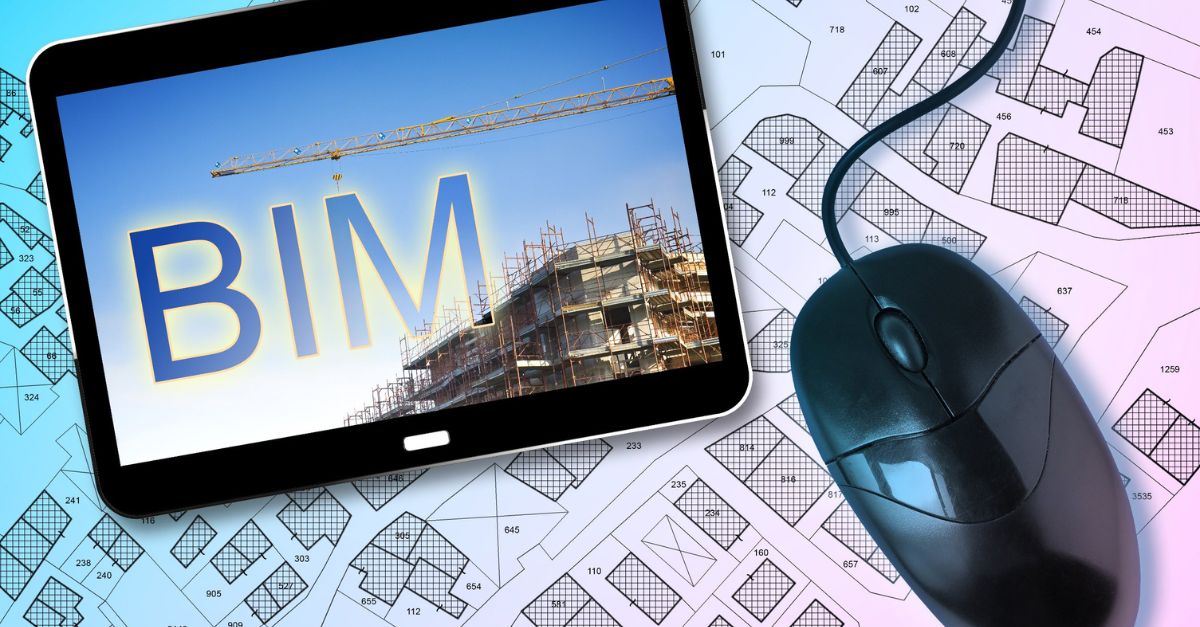Overview: What you should know about Building Information Modeling (BIM)
The popularity and importance of Building Information Modeling (BIM) has increased worldwide, not only because of digitization, but because many...

Do you already use digital tools for your BIM planning? Or are you about to start a project that requires Building Information Modeling? Then our tips make BIM planning easier for you.
You already know from our last post on Building Information Modeling: If you implement and use BIM correctly, you will benefit from many advantages. All parties involved benefit from developing a better understanding of the construction project, improved communication, quality control, and costs are reduced.
Our general and data-related advice will help you get the most out of your BIM project and related planning.
The world of Building Information Modeling is complex. No less complicated are the implementation and use of BIM during a project. But don't just make sure that your BIM software works flawlessly. Also consider your environment. Equally important are the people involved in the project and your personal dealings with them, as they all go through the various processes of the project together.
What do you want to achieve with the use of BIM? With a clear objective in mind, it is more likely that the use of BIM will be worthwhile in the long term. Possible goals include improved project coordination, increased efficiency and, cost reduction.
Using the SMART method, your objective can be formulated efficiently – and more comprehensibly for all parties involved. Your SMART BIM goals are then specific, measurable, achievable, relevant, and time-bound.
Examples of other SMART goals:
Your BIM plan should include not only your goals, but also the way you want to achieve them. For each project participant to know what role they are playing, an additional overview that summarises roles and responsibilities can be useful.
Have new tasks arisen or postponed schedules? Then don't forget to update your plan accordingly and inform the project stakeholders if necessary.
Do you already have a software program that you use for Building Information Modeling? If not, the selection should be based on your needs and your project. The challenge for you is to find the right program as software programs on the market focus on various aspects of BIM.
Think about what kind of project you're working on, how big and complex your project is, and the budget you have at your disposal for it.
Without regular and joint exchange, no project can run successfully. This also applies to BIM projects. Good communication is crucial.
Does your project expect that a lot of information is continuously shared among the participants? Then a communicative exchange with each other is all the more important.
Make sure you have a system in place to manage BIM files and documents. In this way, you accelerate, strengthen, and simplify the data exchange between all project participants. This flow of information also improves the flow of communication.
Make sure that the management system is easy to use. Everyone should be able to access the information.
Without detailed information about your project, you can't start BIM planning. Therefore, find as much data as possible. Also, check with the people involved in the project for more useful information. Once you have collected all the documents, you should take a closer look at this collection and pay attention to the following details.
What role does the available data play for your project? You can selectively sort out information that is not relevant. This leaves only the documents that you really need for BIM planning.
Digitalisation is increasingly appreciated in the construction industry: more and more physical assets are receiving digital representations. This representation can only be created with high quality data. When analysing, capturing, storing, and sharing, pay attention to the highest possible data quality.
Everyone involved should work with the same data and data formats. Inform the project participants about the data format to work with. Also check all available data for it. In the next step, it is important to pay attention to the functionality of the data. Without functioning or complete data, there are problems with BIM planning and the flow of your project.
A uniform data format allows you to reduce the amount of data: only the data that meets your project specifications and your BIM planning remains.
More and more companies in the construction industry are recognising the value of Building Information Modeling. But if you use BIM in your organisation or as part of a project, you will quickly realise that many things must be taken into account, not just when applying BIM programs. It is also important to consider the people involved in the project who use the BIM software and the processes that belong to Building Information Modeling. With the help of our tips, you can pay even better attention to these aspects.
Does your construction project require the BIM planning of a piping system made of engineered polymer? Our design department uses professional software such as INVENTOR or REVIT to design distributors or other components you need for your piping system. We are happy to send you the finished CAD drawing, data, and an associated parts list following a final check and production release. You can then transfer this information to your own planning software. We are happy to support you in the field of BIM:
The popularity and importance of Building Information Modeling (BIM) has increased worldwide, not only because of digitization, but because many...
Good skilled workers are hard to find on the German and international labor markets. Studies and short reports of the Leibniz Institute for Economic...
aquatherm already supports you as a leading manufacturer of plastic piping systems made of polypropylene and by offering you a first-class service....